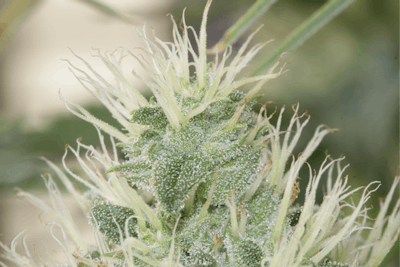
This article was originally published Jan. 6, 2020
Breeding programs for almost any plant can be as simple or as complex as you choose to make them. Fortunately, you can quickly and effectively develop your own breeding program, even if you are a beginner. All it takes is a sharp eye for positive traits that you’re interested in developing and an accurate record-keeping system to track the usable crosses you’ve made, as well as the parental lines (male and female) that you’ve used.
Cannabis is dioecious (meaning the species includes separate female and male plants) as opposed to monecious (which means that an individual plant can have both male and female flowers). You need both male and female plants to begin a breeding program. TIP: It is imperative that you separate males and females from the beginning, and keep them separated throughout the program to ensure that you don’t get unwanted contamination by pollen from male plants that you have not selected to cross.
So how do you select breeding parents or parental lines to begin with? While it is relatively easy to select the female line, it can be difficult to select male lines for the following reasons:
- All the traits of interest on the female selection can be seen or documented, including: growth and development rates; flower characteristics such as size, quantity, smell and color; as well as potential for accumulating THC or CBD, and terpenes. This cannot be said of male plants.
- Male plants can only express growth and development traits visually. All other bud traits are hidden in their genetic makeup and are not expressed for selection. You can select for pollen sac size and density, but the data so far is inconclusive on how these traits translate to female flower size and density.
You can easily begin by selecting known female strains that have most or all the desired traits that you want expressed in any cross, and by selecting males that are derived from strains having other or stronger vegetative traits that you want incorporated into your new strain.

TIP: Once you’ve selected your P1, or parental lines, you must cross them by gathering mature pollen from the male flower and physically placing it onto the mature female flowers. You can tell when the female flower is ready by observing the stringy, white-yellow stigmas developing from the buds. Many people say these stigmas look like hairs. TIP: Once the stigmas are seen, you can pollinate within a two- or three-week period, so long as pistils are still present and white in color. The males are ready for pollen extraction once you see the oval-shaped anthers starting to split open and release pollen. You can also tell by observing any powdery, yellow pollen accumulating on leaves just under the male flowers.
At this point, make sure you’ve isolated both female and male plants to avoid unwanted cross-pollination and follow these steps:
Step 1. Place a piece of foil or a smooth plastic cup under the pollen sacs while you shake them. You will see the yellow powder (pollen) accumulating. A little bit of pollen goes a long way. TIP: You can break up the total amount of pollen you have collected into packets and freeze them if you intend to use the extra pollen in the future.
Step 2. Isolate the female plant you want to pollinate and either shotgun the entire plant by shaking off your pollen above the plant and letting it float down onto the stigmas, or pollinate specific flowers individually by using either a fine-tipped brush, your finger or a pen cap. Pollinating individual flowers gives the breeder the ability to pollinate the same female plant with pollen from several males at one time. If you take this approach, make sure to label each branch or flower with the specific cross.
In breeding terminology, the female plant typically goes first in the naming convention. For example, “Snake Eyes x Diamond Dust” means Snake Eyes is the female plant receiving the male Diamond Dust pollen.
Step 3. It is imperative that your pollinated female plant is isolated from all other plants while seeds are developing, unless all the female plants are receiving the same male pollen.
Step 4. Provide mother plants with a good source of nutrients, including more nitrogen than what’s included in most bloom nutrient formulas. It may be helpful to switch to a vegetative nutrient schedule to ensure seeds receive what they need during the seed-formation process. Seeds should start forming a few weeks after pollination, and will be busting out of their heavy calyxes several weeks after that. If you need to keep the seeds, save them in a cool, dark place—like a refrigerator.
You have now made your first successful cross! The seeds derived from this cross are called F1. If you continue to cross F1s with each other, the resulting generation is called the F2.
Now you can germinate your F1 seeds and see how they grow. Do they grow fast or slow? How do the buds develop? How long is the flowering stage? What is the smell like? How about the taste, or the potency?
TIP: It may be helpful to keep clones of your plants in case one happens to be a real winner. That way you can use it as part of your breeding program indefinitely.
At this point, it is important to stress record-keeping. TIP: To breed successfully, you must keep great records. Write down which plants were bred together and how their offspring performed. This lets you keep track of traits that show up in the parents and offspring. It will also help you create new strains because you’ll be able to know what traits to expect when breeding certain plants.
David Holmes has 20 years of cannabis breeding and cultivation experience. He is co-founder and CEO of Clade9. Dr. William Torello has over 35 years’ experience in the plant and soil sciences. He works for Clade9 out of Los Angeles.
























